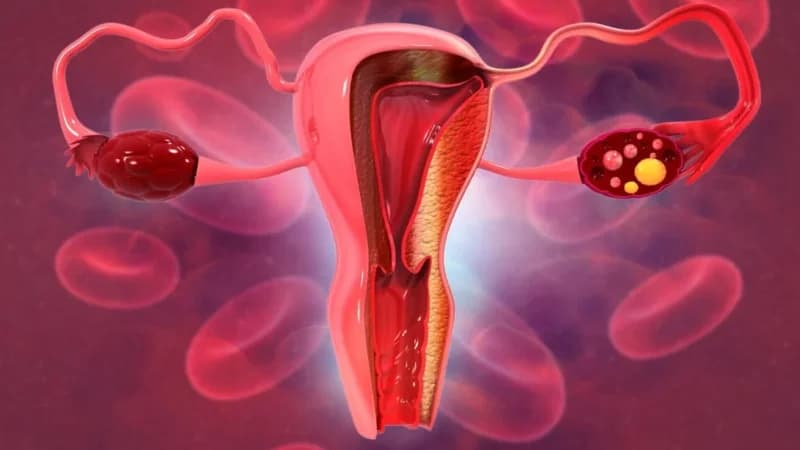Cervical cancer refers to the abnormal growth of cells in the cervix. The majority of cervical cancer is due to the human papillomavirus (HPV). To protect yourself against cervical cancer you could have regular gynecological exams such as Pap tests as well as practicing safe sex. Surgery, radiation, and chemotherapy are the main treatments for cervical cancer. Although most HPV infections clear up on their own and most pre-cancerous lesions resolve spontaneously, there is a risk for all women that HPV infection may become chronic and pre-cancerous lesions progress to invasive cervical cancer.
What is cervical cancer?
Cervical cancer begins on the surface of your cervix; this happens when the cells on your cervix begin to change to precancerous cells. Having regular checkups can help find these problematic cells and treat them before they change to cervical cancer. HPV is the main cause of cervical cancer.

What is the cervix?
Your cervix is the lowest part of your uterus (where a baby would grow during pregnancy). The cervix will connect your uterus to the opening of your vagina. What covers the cervix is made up of cells which can grow and change to pre-cancerous cells.
Cervical cancer cause & screening
Nearly all cervical cancers are caused by an infection with certain high-risk types of human papillomavirus (HPV). HPV can be transmitted by any skin-to-skin contact of the genital area, vaginal, anal, or oral sex as well as sharing sex toys. Screening tests include:
Pap test: For this test, your doctor will scrape & brush cells from your cervix. These cells are then examined in the lab to check for abnormal cells. A Pap test can detect cancer cells in the cervix.
HPV DNA test: The HPV DNA test involves testing cells from the cervix for infection with any of the types of HPV that are most likely to lead to cervical cancer.

How Does HPV Cause Cancer?
As the high-risk HPV infects cells, the way cells communicate is interfered with, this causes the infected cells to multiply in an uncontrolled manner. Your immune system usually recognizes and controls the infected cells. However, sometimes the infected cells remain and continue to grow, eventually forming an area of precancerous cells that, if not treated, can become cancer. It takes 10-20 years for the HPV-infected cervical cells to develop into a cancerous tumor. Among women whose cervical cells are infected with high-risk HPV, several factors increase the chance that the infection will be long-lasting and lead to precancerous cervical cells. These include:
Having a very aggressive HPV type, particularly HPV 16 or HPV 18. If you have either of these HPV types, make sure you receive diagnostic testing with a colposcopy.
Smoking cigarettes. Quitting smoking can help your body to fight HPV.
Having a weakened immune system. If you have HIV or are taking medicines that suppress your immune system, talk to your healthcare provider about diagnostic testing and follow-up.
How to protect yourself from cervical cancer?
Although cervical cancer can’t be prevented, there are ways to lower your chances of developing it. Cervical screening and HPV vaccination are the best ways to protect yourself from cervical cancer.
For women between 25 and 64, it’s important to have screenings since changes can be found and treated before turning into cancer.
Children should get the HPV vaccine at the age of 12 to help protect them against all cancers caused by HPV.
Using condoms, which lowers your chance of getting HPV
Smoking can weaken your immune system and the chemicals in cigarettes can also cause cervical cancer
Eating a balanced diet will help support your immune system

Types of cervical cancer
Depending on the type of cells where the cancer begins, cervical cancer is divided into types. The main types include:
Squamous cell carcinoma: This type of cervical cancer begins in thin, flat cells, called squamous cells. The squamous cells line the outer part of the cervix. Most cervical cancers are squamous cell carcinomas.
Adenocarcinoma: This type of cervical cancer begins in the column-shaped gland cells that line the cervical canal.
What are the stages of cervical cancer?
Stage I: Cancer is found only in your cervix. It hasn't spread and is small.
Stage II: Cancer has spread beyond your cervix and uterus but hasn't yet spread to your pelvic wall (the tissues that line the part of the body between your hips) or your vagina.
Stage III: Cancer has spread to the lower part of your vagina and may have spread to your pelvic wall, ureters (tubes that carry urine) and nearby lymph nodes.
Stage IV: Cancer has spread to your bladder, rectum, or other parts of the body like your bones or lungs.

How is cervical cancer treated?
Your healthcare provider will recommend a treatment for your cervical cancer based on factors such as the stage of the disease, your age, and general health, as well as if you want children in the future. The treatments for cervical cancer are radiation, chemotherapy, surgery, targeted therapy, and immunotherapy.
Radiation
This cervical cancer treatment will use energy beams to kill cancer cells on your cervix. The 2 types of radiation therapy are:
External beam radiation therapy (EBRT): Aims high-powered radiation at cancer from a machine outside your body.
Brachytherapy: Puts the radiation in or just near cancer.
Chemotherapy
Chemo is the injection of drugs through veins aimed at killing cancer cells. It enters your blood and is effective for killing cells anywhere in your body. There are several drugs used for chemo and they can be combined. Depending on the drug used and your cancer’s progress, your chemotherapy cycle may differ.
Surgery
Different kinds of surgery are used to treat cervical cancer. Some of the most common kinds of surgery for cervical cancer include:
Laser surgery: This surgery uses a laser beam to burn off cancer cells.
Cryosurgery: This surgery freezes cancer cells.
Cone biopsy: A surgery in which a cone-shaped piece of tissue is removed from your cervix.
Simple hysterectomy: This surgery involves the removal of your uterus but not the tissue next to your uterus. Your vagina and pelvic lymph nodes aren't removed.
Radical hysterectomy with pelvic lymph node dissection: With this surgery, your uterus, surrounding tissue called the parametrium, your cervix, a small portion of the upper part of your vagina, and lymph nodes from your pelvis are removed.
Trachelectomy: This procedure removes your cervix and the upper part of your vagina but not your uterus.
Pelvic exenteration: This is the same as a radical hysterectomy but includes your bladder, vagina, rectum, and part of your colon, depending on where the cancer has spread.
In its earliest stages, the disease is curable by removing the cancerous tissue. In other cases, your provider may perform a simple hysterectomy or a radical hysterectomy.

Targeted therapy
This treatment aims at destroying specific cancer cells without damaging your healthy cells. It works by targeting proteins that control how cancer cells grow and spread.
Immunotherapy
Immunotherapy uses medicine to stimulate your immune system to recognize and destroy cancer cells. Cancer cells can also avoid being attacked by your immune system by sending off a signal. Immunotherapy helps to target these signals so the cancer cells can't trick your body into thinking it's a healthy cell.
Conclusion
In conclusion, Human Papillomavirus (HPV) is a significant public health concern due to its strong association with cervical cancer. It is the most common sexually transmitted infection, with certain high-risk strains leading to various types of cancers, including cervical cancer. The development of HPV vaccines has provided a powerful tool for preventing HPV infection and subsequently reducing the incidence of cervical cancer. Regular screening and early detection remain crucial as the vaccines do not protect against all types of HPV. Therefore, a comprehensive approach combining vaccination, regular Pap smears, and HPV testing is essential in the fight against cervical cancer. Public awareness and education about these preventive measures are also key to reducing the global burden of this preventable disease.